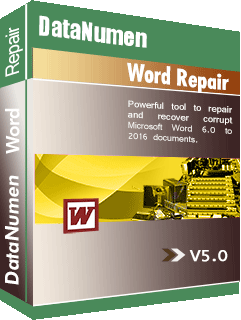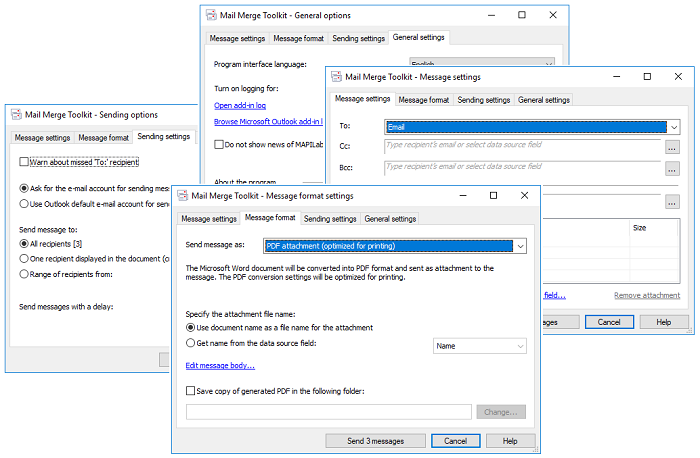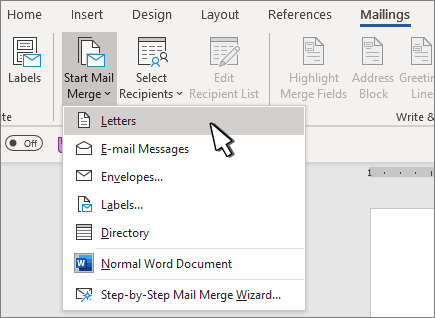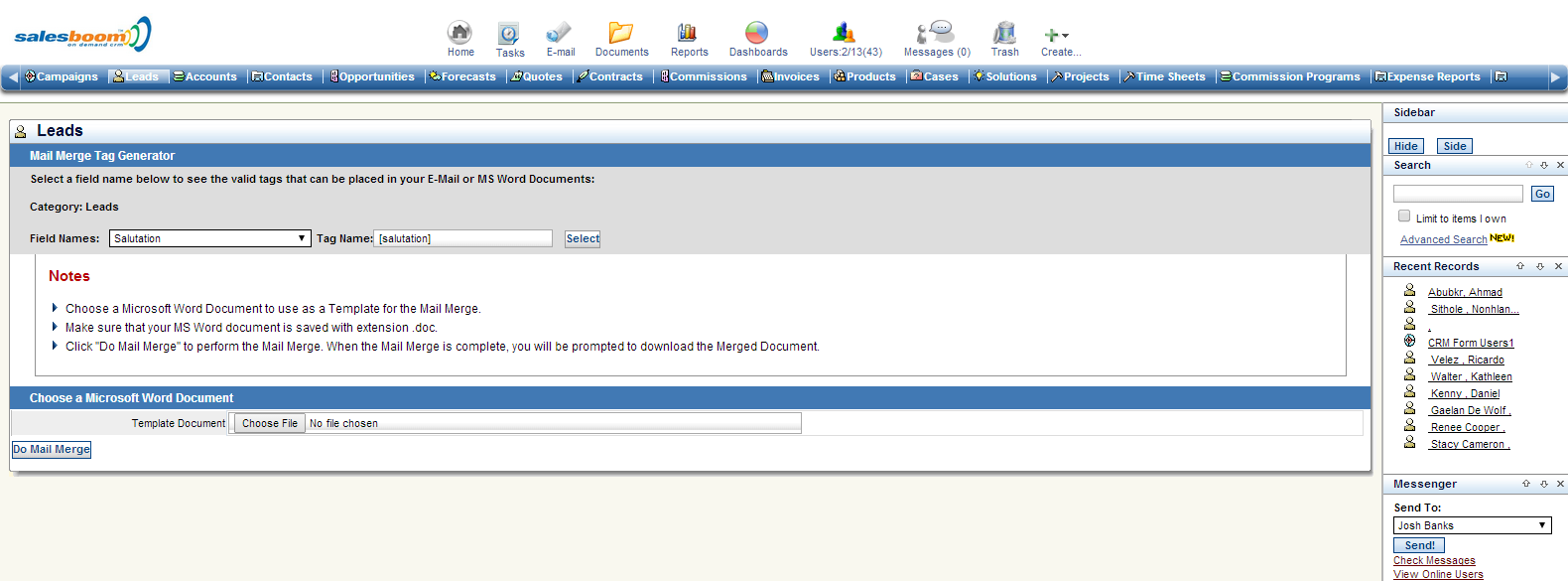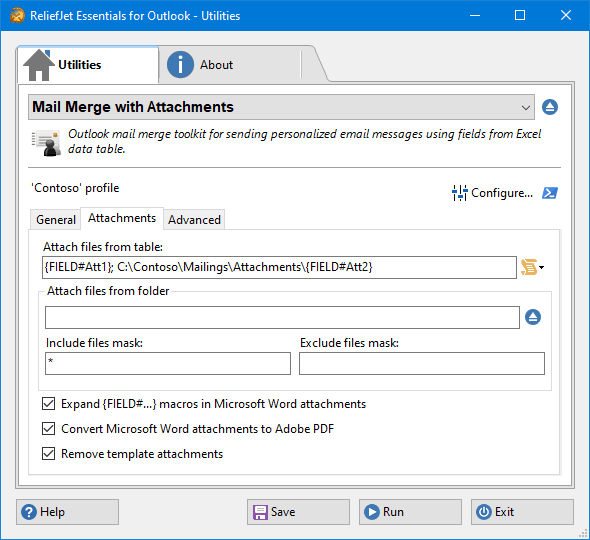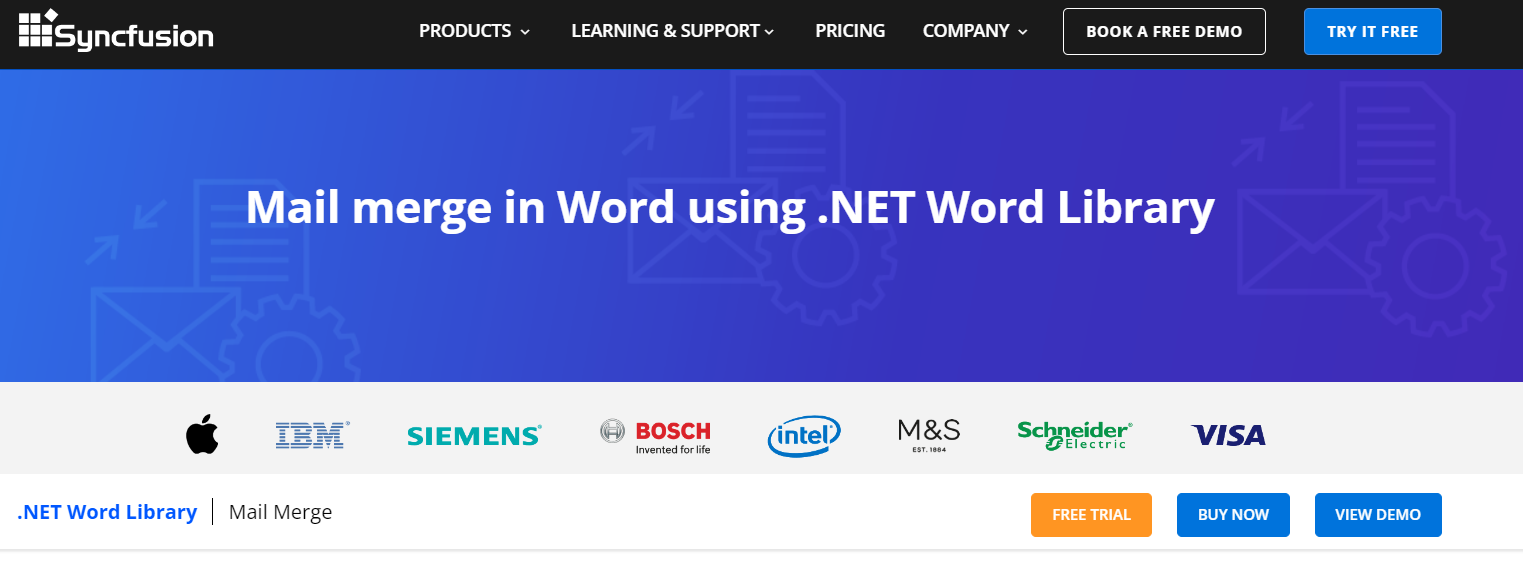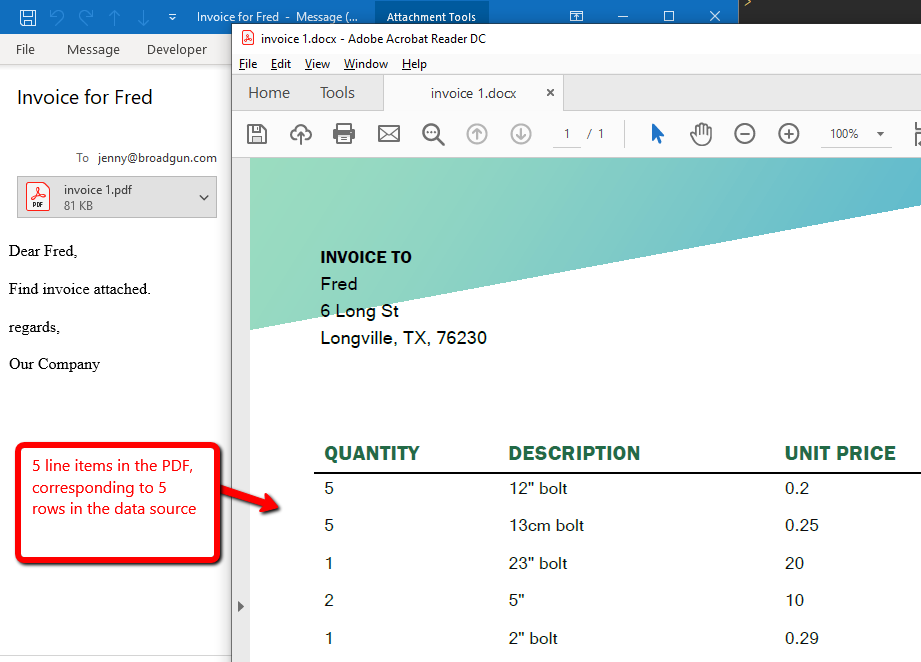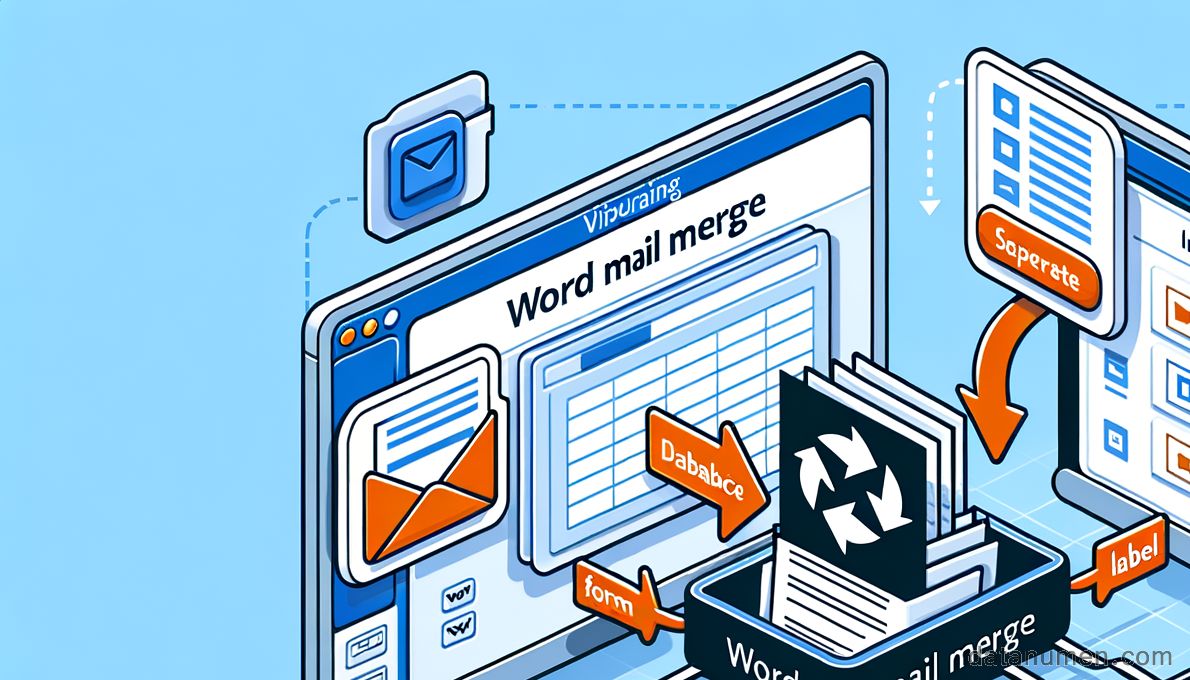1. Introduction
The use of Word Mail Merge tool is a well-regarded practice within a variety of professional environments. With this crucial tool, one can merge data from a database, spreadsheet, or other form of data storage into pre-designed forms, labels, envelopes and more in a Word document.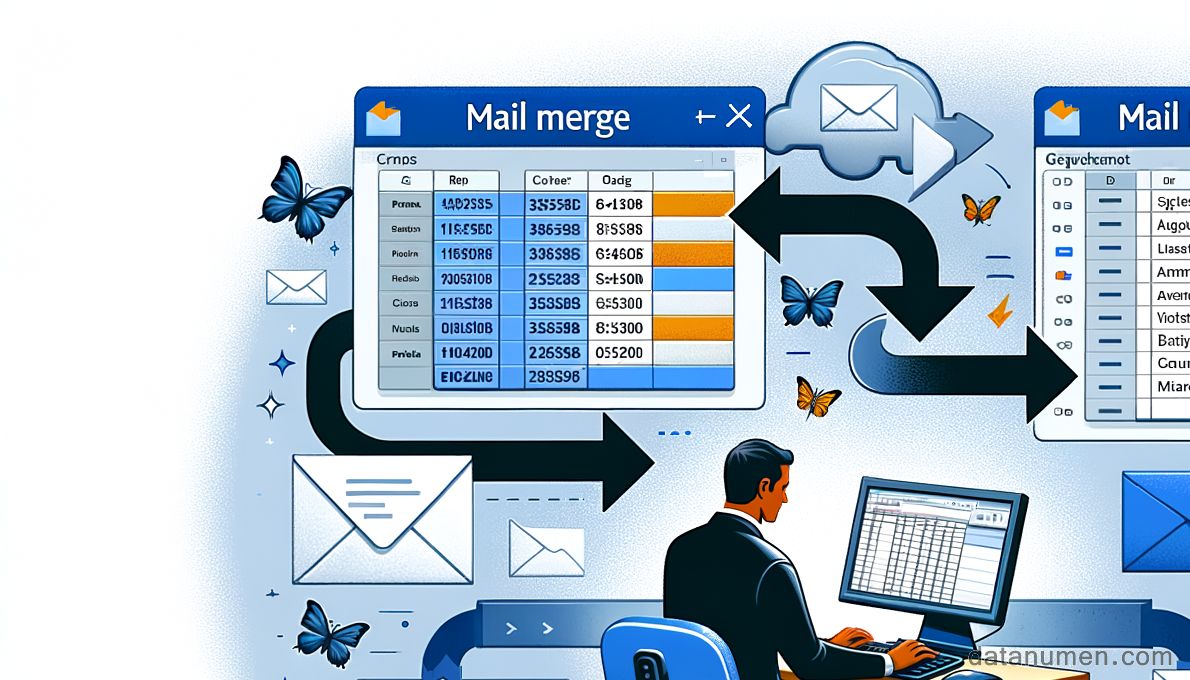
1.1 Importance of Word Mail Merge tool
Word Mail Merge tool not only simplifies the process of integrating data into various formats but also saves considerable time and effort, especially when dealing with bulk tasks. This tool is particularly beneficial in workplaces that deal with large amounts of data on a regular basis as it enables streamlined document creation and ensures accuracy, consistency, and professionalism in each output.
1.2 Word Repair Tool
You also need a powerful Word repair tool for corrupt Word files. DataNumen Word Repair is used by most of the users:
1.3 Objectives of this Comparison
Given the numerous Word Mail Merge tools available on the market, it becomes essential to compare and analyze each one in order to identify what best suits your needs. The objective of this comparison is to provide a comprehensive analysis of some of the top Word Mail Merge tools to enable users to make a more informed decision regarding their selection. This comparison covers a brief introduction of each tool, as well as their respective pros and cons.
2. Mail Merge Toolkit
The Mail Merge Toolkit by MAPILab is an add-on for Microsoft Office that enhances the mail merging capabilities in Microsoft Outlook, Microsoft Word, and Microsoft Publisher. With this tool, you can send messages to multiple recipients in a variety of formats, including HTML, RTF, and PDF, and you can also add attachments to your mail merges.
2.1 Pros
- Advanced data formatting: Allows users to format data in ways that fit their requirements, enhancing flexibility and customization.
- Multiple formats support: Supports sending mail merges in a variety of formats such as HTML, TXT, RTF, and PDF, facilitating versatile usage.
- Attachments feature: Ability to add attachments to the mail merge campaigns, a feature which is omitted in many similar tools.
2.2 Cons
- Complex Installation: The installation process can be a bit complex, particularly for beginners or less technically inclined users.
- Incompatibility issues: Some users have reported issues with compatibility when using certain versions of Microsoft Office.
- Limited support: Customer support might not be up to the mark when it comes to resolving user queries or systemic issues effectively.
3. Microsoft Word
Microsoft Word, a product from the Microsoft Office Suite, offers a built-in Mail Merge feature that creates personalized letters and envelopes for mass mailings. With this feature, users can create a document, connect it to a data source, and merge the data into the document, creating a series of personalized documents from a single template.
3.1 Pros
- Highly prevalent: As a part of the Microsoft Office Suite, Word’s Mail Merge tool is readily available and widely used in many workplaces.
- User friendly: Its well-structured steps, from selecting the document type to finishing the merger, make the tool easy to utilize, even by beginners.
- Integration with other Office products: Compatible with other Microsoft Office Suite products like Excel, Access, and Outlook, making the data source setup easier for users.
3.2 Cons
- Limits on data sources: While versatile, its compatibility is primarily limited to other Microsoft products for ideal functioning.
- Complexity in advanced tasks: For more complex tasks such as conditional statements, it might be less intuitive and requires some degree of expertise.
- Lack of advanced customization: Unlike some third-party tools, the inbuilt Word Mail Merge tool lacks advanced customization features.
4. Salesboom
Salesboom is a comprehensive CRM platform that includes a versatile Word Mail Merge tool. This functionality facilitates the creation of mass personalized documents using data from the platform’s vast database. It’s an ideal tool for businesses that use CRM frequently and require regular mass mailing, such as follow-up emails, promotional newsletters, and customer notifications.
4.1 Pros
- Integrated CRM: Being an integrated part of a CRM, it makes the use of customer data for mail merges quick and easy.
- Cloud-based: As a cloud-based platform, it allows users to access the tool from anywhere, offering great flexibility.
- Customization options: It offers several customization options for the mail merge documents, making it easier for users to tailor the documents to their needs.
4.2 Cons
- Dependent on CRM: As it’s part of the CRM, using Salesboom’s mail merge tool without the CRM package is not possible.
- Steep Learning Curve: Though packed with features, its various options might require some time and effort to master completely.
- Cost: Salesboom’s CRM, including the mail merge tool, does come with a price tag which might not be ideal for cost-conscious businesses or individuals.
5. MergeTools
MergeTools is a powerful add-in for Microsoft Word, enhancing the native mail merge capabilities. Its goal is to simplify the process and provide options for more complicated merging tasks like creating directory style reports, merging to separate documents or PDFs, and controlling the merging process with a greater degree of precision.
5.1 Pros
- Enhanced merge options: Provides more sophisticated options over the built-in Mail Merge feature of Microsoft Word, giving the user more control and versatility.
- Individual merge documents: It allows users to create separate documents or PDFs for each recipient, a feature not readily available in many other tools.
- Directory style reports: It is an excellent tool for creating directory style reports with a higher degree of control over the layout.
5.2 Cons
- Learning curve: Due to the multitude of additional options, new users might find this tool a bit challenging initially.
- Technical glitches: Some users have faced occasional technical glitches during massive mail merging tasks.
- Customer support: The customer support could be improved, as users have reported difficulty in getting a timely response to questions and issues.
6. ReliefJet Essentials for Outlook
ReliefJet Essentials for Outlook is a handy application that offers a wide range of functionality for Outlook users. Among these is a sophisticated Mail Merge tool that enables users to create personalized messages for a large audience using data from various sources, integrating seamlessly with the Outlook interface.
6.1 Pros
- Wide range of functionality: Apart from mail merge, it offers a wealth of other features that can aid in optimizing your Outlook experience.
- Attachment support: Offers the ability to add attachments to your mail merges, a plus for businesses that often need to send varied attachments to different recipients.
- Integration with Outlook: As an Outlook-specific tool, it integrates seamlessly with the Outlook interface and other related Microsoft tools, making it a convenient option for regular Outlook users.
6.2 Cons
- Limited to Outlook: As it’s a tool specifically designed for Outlook, those not using this platform might find it less beneficial.
- Complex interface: The multitude of features might make the interface seem cluttered and overwhelming to some users, particularly beginners.
- Cost: The product is not free, and depending on your needs, there may be other less expensive options available.
7. .NET Word library (DocIO)
.NET Word library, also known as DocIO from Syncfusion, is a powerful .NET library designed to create, read, and edit Word documents programmatically. Among its many features, it boasts a Mail Merge functionality that helps users to create bulk letters, invoices, mailing labels, and other documents that require the combination of static and dynamic data.
7.1 Pros
- Programmatic control: Offers developers a high level of control over document creation and editing, enabling them to define the specifics of how the mail merge process is carried out.
- Support for various data sources: Compatible with various data sources including ADO.NET objects, XML, dynamic objects, and others, providing users with flexibility in data selection.
- Wide feature set: In addition to mail merging, DocIO provides a wealth of other Word processing features, making it a comprehensive solution for .NET developers working with Word documents.
7.2 Cons
- Developer-oriented: Being a library for developers, it may not be suitable or user-friendly for those without programming skills.
- Learning curve: Due to it being a comprehensive library, it might take some time to understand and utilise its full potential.
- Pricing: The library is included as part of Syncfusion’s larger suite of development tools and could be expensive depending on the licensing model.
8. pdfMachine
pdfMachine by Broadgun is a software that offers a range of features including mail merge, which aims to simplify large scale communication needs. Its core capability involves converting mails into PDFs but its versatile mail merge feature enables users to create personalized bulk emails in PDF format.
8.1 Pros
- PDF format output: This tool stands out for its capability to create personalized bulk emails directly in PDF format, which ensures consistency of formatting and presentation for all recipients.
- Easy to use interface: Broadgun’s pdfMachine boasts an intuitive interface, making the process of performing mail merges and other tasks straightforward for new users.
- Email Support: It integrates with MAPI compliant mail programs such as Outlook, making it easier to send mails directly using the application.
8.2 Cons
- Limited format compatibility: As the tool is primarily for PDF creation, sending mails in HTML or other formats may not be possible.
- Limited to Windows: Currently, the software is compatible only with Windows OS, limiting its usage for those on different operating systems.
- Restricted customisation: It may not offer the same level of customization in the mail merge process as some other dedicated mail merge tools.
9. Summary
9.1 Overall Comparison Table
| Tool | Features | Ease of Use | Price | Customer Support |
|---|---|---|---|---|
| Mail Merge Toolkit | Advanced data formatting, multiple format support, attachments feature | Moderate | Paid | Good |
| Microsoft Word | Integration with MS Office, user-friendly interface | High | Part of Office Suite | Great |
| Salesboom | Integrated CRM, cloud-based, customization options | Medium | High | Good |
| MergeTools | Enhanced merge options, individual merge documents, directory style reports | Medium to High | Paid | Average |
| ReliefJet Essentials for Outlook | Wide range of functionality, attachment support, integration with Outlook | Medium | Premium | Average |
| .NET Word library (DocIO) | Programmatic control, support for various data sources, wide feature set | Low (for non-developers) | Premium | Good |
| pdfMachine | PDF format output, easy to use interface, email support | High | Paid | Good |
9.2 Recommended Tool Based on Various Needs
Based on the comparison, businesses with large customer databases that require regular mail-outs might find Salesboom’s integrated CRM Mail Merge tool beneficial. For developers who need programmatic control over the whole process, .NET Word library (DocIO) would be the right fit. On the other hand, users who frequently send bulk PDF format emails could benefit from pdfMachine’s specific output format.
For users who want an easy to use option and are already familiar with Microsoft Office, then MS Word’s Mail Merge function might be the most convenient tool. However, for those who are looking for more advanced merging options, MergeTools might be a worthwhile alternative. Lastly, for Outlook users looking for a more integrated solution, ReliefJet Essentials for Outlook would be a solid choice.
10. Conclusion
10.1 Final Thoughts and Takeaways for Choosing a Word Mail Merge Tool
Selecting an appropriate Word Mail Merge tool should be guided primarily by your specific needs and usage context. It’s important to consider the volume, complexity of the documents being merged, as well as the versatility required in terms of data sources and output format. Ease of use and cost are also significant considerations as they affect how colleagues or employees adapt to the tool, and, of course, your budget.
While some might appreciate the advanced, developer-oriented capabilities of tools like .NET Word library (DocIO), others may prefer the accessibility and familiarity provided by the in-built Mail Merge function in Microsoft Word. At the same time, CRM-integrated tools like Salesboom may offer the most benefit to business-oriented users who require frequent, personalised customer communication.
In conclusion, all listed tools have their strengths and potential drawbacks. The key is to find a tool that matches your specific requirements and offers the best features that can help you efficeiently and effectively manage your mail merge tasks.
Author Introduction:
Vera Chen is a data recovery expert in DataNumen, which provides a wide range of products, including a powerful OST file recovery tool.
